Direct sunlight is one of the most common causes of thermostat misreading. And because a thermostat's job is to keep one's home comfortable for everyone to live in, this is a major issue that a lot of homeowners deal with. So, we did our research and asked various experts on how to block direct sunlight on a thermostat.
One way to block the sun out from the thermostat is by hanging heavy drapes or thick curtains over the windows where direct sunlight is filtering in. Others suggest using a tall potted plant. Still, most would advise that moving the thermostat to an enclosed space where sunlight doesn't reach is the best solution.
In this article, we will go further in-depth on how to block direct sunlight from the thermostat, as well as what other factors affect it. Then, we will answer other frequently asked questions to satisfy one's curiosity when it comes to thermostats. Please continue reading to find out more.
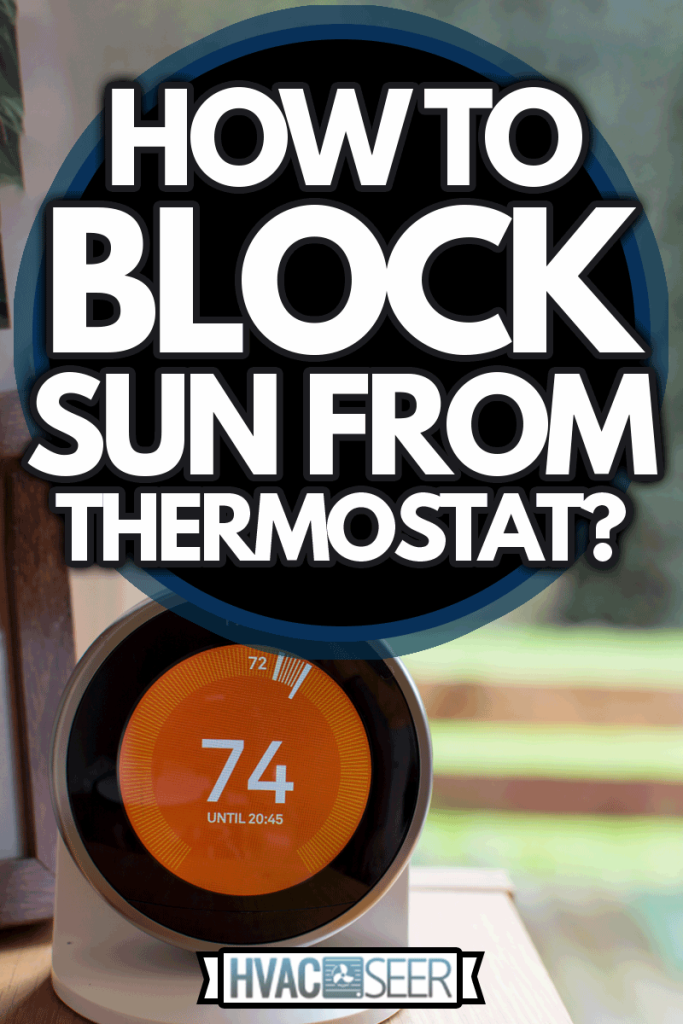
Can I Cover The Thermostat?
While there are plenty of thermostats whose designs don't fit the aesthetics of one's home, covering them up isn't the solution. Placing a poster or a picture frame over one might seem like a good idea, but unfortunately, this prevents the thermostat from reading accurately.
And when that happens, the air conditioner and heater won't be able to function properly. They'll just suddenly turn on or off at times you least expect them to. This will not only cost wear and tear to your HVAC system, but it would cost money and energy as well.
So, if you insist on covering the thermostat at home, we suggest concealing it discreetly. Using a tall houseplant is one way to cover the thermostat without affecting the way it works.
Below is an example of covering a thermostat. While it looks festive during the winter months, it can also trigger your thermostat to kickstart the air conditioner, and that's the last thing you want when it's freezing outside.
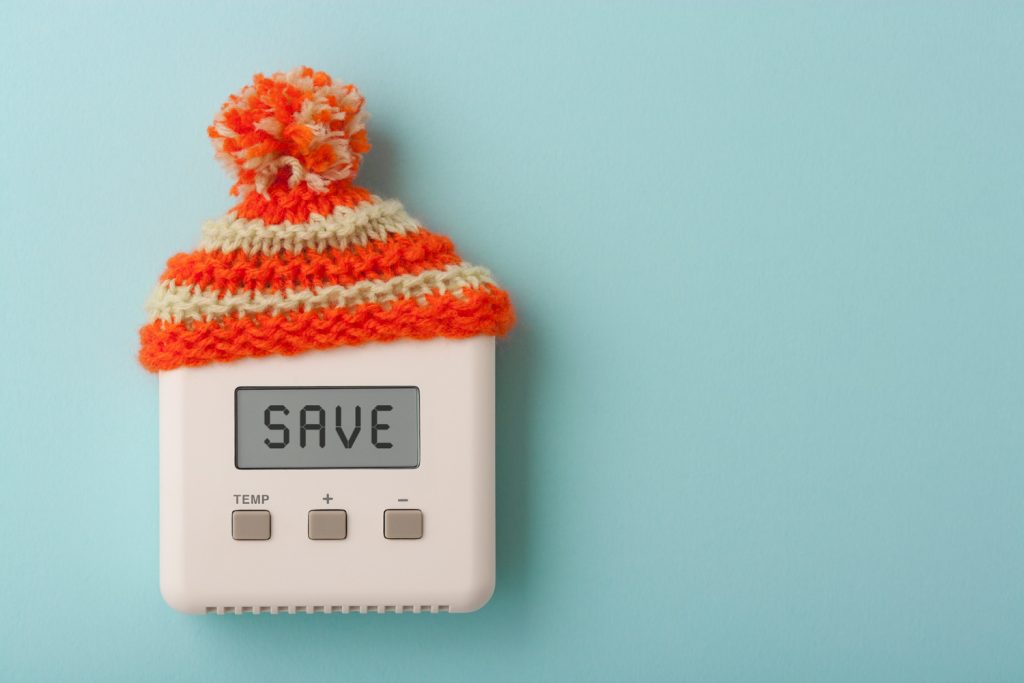
How Do You Sunblock A Thermostat?
Nowadays, a lot of modern thermostats have a feature that can prevent the sun's direct sunlight from affecting them. However, that's not the case in some homes that still use thermostats from a decade ago.
Most professionals would recommend moving the thermostat to a different portion of the house. Preferably, somewhere the sun's rays can't get into.
However, this might cause a lot of money if the thermostat is directly installed on the wall of the house. Instead, using curtains or drapes made out of heavy and thick fabrics would work just as well. This will prevent direct sunlight from entering the room and messing up the thermostat's reading.
Houseplants and the like can work as well. However, refrain from using objects that emit heat like lamps and televisions. These prevent the thermostat from reading accurately as well.
Factors That Prevent A Thermostat From Reading Accurately
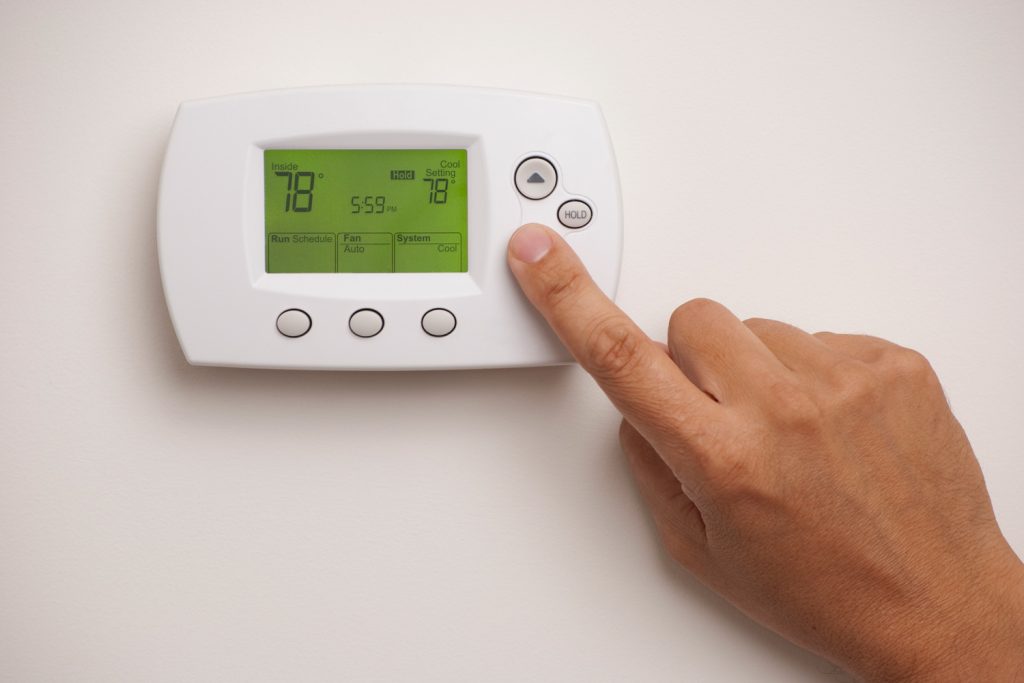
Earlier, we have mentioned some factors that affect how a thermostat reads. In this section, we would further discuss each one and introduce other common factors that prevent your thermostat from reading accurately.
Direct Sunlight
As we have established earlier, direct sunlight is a major reason why you're thermostat doesn't read properly. Not only does it make your thermostat read a higher temperature than normal, but it could also cause it to overheat.
On top of that, this would cause the HVAC system of your home to not work properly. For example, your thermostat would cause your air conditioner to turn suddenly due to the sudden rise in temperature created by the sun's heat. This will not only cause your house to suddenly feel cold when you least expect it to, but it also wastes both money and energy as well.
Even though natural lighting is a plus in many homes, make sure that your thermostat won't get affected by it. Keep your thermostat away from direct sunlight as much as possible.
Heat or Drafts
Besides the direct rays from the sun, other heat sources like lamps, television sets, furnaces, and others similar to them would cause thermostat misreading. Keep them away from your thermostat.
Another one to consider is cold drafts of wind. Keep windows and doors to prevent them from getting inside the room the thermostat is located.
Before installing a thermostat in your home, take note of the area where you would like to place it. If there are too many heat sources gathered in that area or if it's near an open window, reconsider your decision.
Dust and Particles
Although most thermostats have a cover, dust and particles can still accumulate inside them. These also affect the way they read indoor temperatures.
Since thermostats are sensitive devices, small particles like dust can easily lower their efficiency if they get into small spaces and holes. When that happens, they can attract small insects as well and make a home out of it.
Make sure to remove the cover and regularly dust the thermostat with a lint-free cloth or a soft brush. In doing so, temperature misreading would be avoided.
Location
If a thermostat is not located in a neutral portion of the house, this could cause fluctuating temperatures in certain areas. This would cause one area to be warmer or cooler than the rest of the house, thereby costing money, energy, and comfort.
Simply relocating the thermostat should fix this issue. In some cases, you may need to call in a professional if you plan to relocate a built-in thermostat. Handling electrical wires and ascertaining where best to place them isn't a project that you should handle on your own.
Faulty Wiring
When the HVAC system in your home isn't working properly, check your thermostat. If the screen went dark, this could be the result of dead batteries or, worse, faulty wiring. First, check whether or not it just needs a fresh set of batteries.
If it doesn't work, the wiring is either frayed or disconnected. In this case, call an electrician to help resolve it for you. Live wiring is fatal if done poorly.
Check this thermostat wire on Amazon.
Outdated Models
Thermostats have gone a long way since they were first introduced, and even now, they still keep on improving. So, it's not unusual for a lot of them to become outdated over time.
Some become too old to maintain your home's temperature, even more so if they still use mercury. Some older thermostats are unable to keep up with your current heating and cooling system, even more so if it's the HVAC unit is the latest model.
So, if you've checked everything and still have no idea why your thermostat is giving faulty readings, then maybe it's time to upgrade to something better. And with how many thermostats are out there on the market, there's one suitable for your home.
Buying A New Thermostat
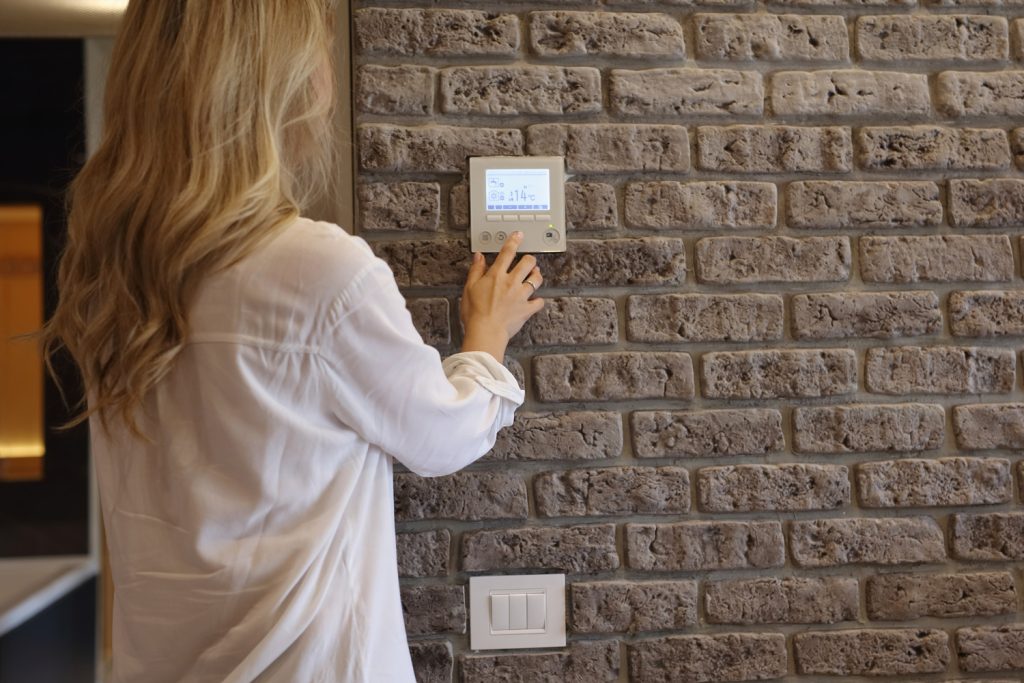
As HVAC units get more advanced over time, the need for a more modern thermostat grows. Many thermostat issues can be resolved by simply installing the latest model.
Modern thermostats are both digital and programmable, allowing one to save on energy while keeping the utility bills low. A lot of them boast features like voice command or remote access, giving one free control of the house's temperature without the need for too many inputs.
The market is flooded with smart thermostats that aim to reduce energy usage while minimizing energy costs. By simply installing them in your home, you ensure a comfortable environment without the need to always regulate the temperature.
Below you see how some modern thermostats work. With the use of your phone, you can simply control your thermostat wherever you may be.
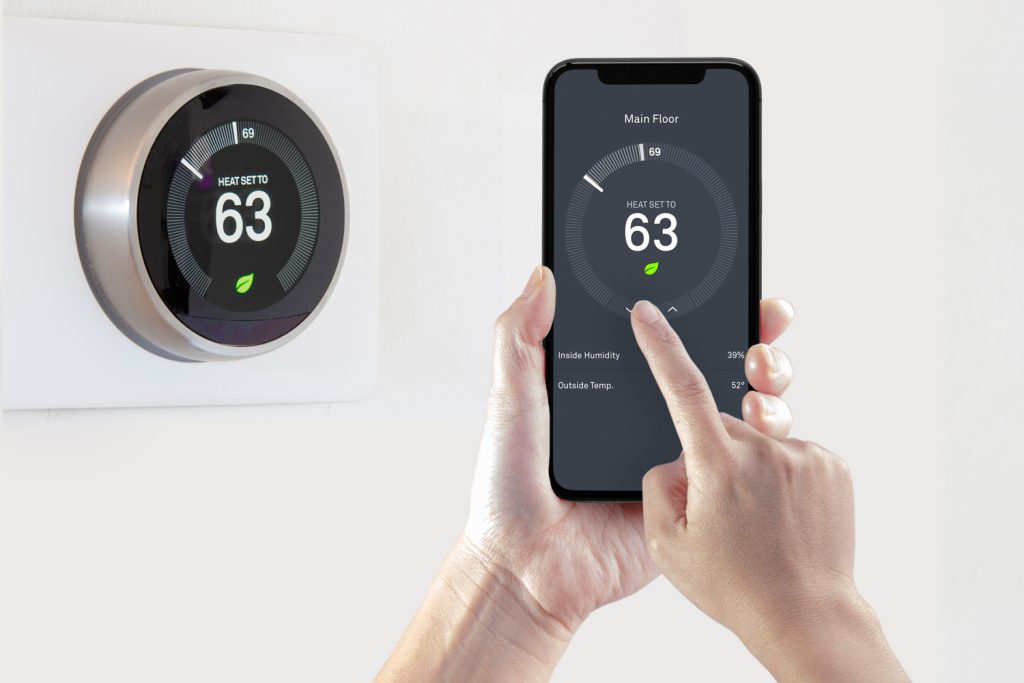
Check here to see this smart thermostat on Amazon.
How Much Clearance Does A Thermostat Need?
It is recommended that thermostats should be installed at least 50 inches above the floor. If the thermostat is giving inaccurate readings, consider moving it to another location.
And as stated earlier, keep the thermostat near the center of the house, away from direct sunlight, household items that emanate heat, and cold drafts. This is to make sure that the thermostat would be working at maximum efficiency without giving any false readings.
In Conclusion
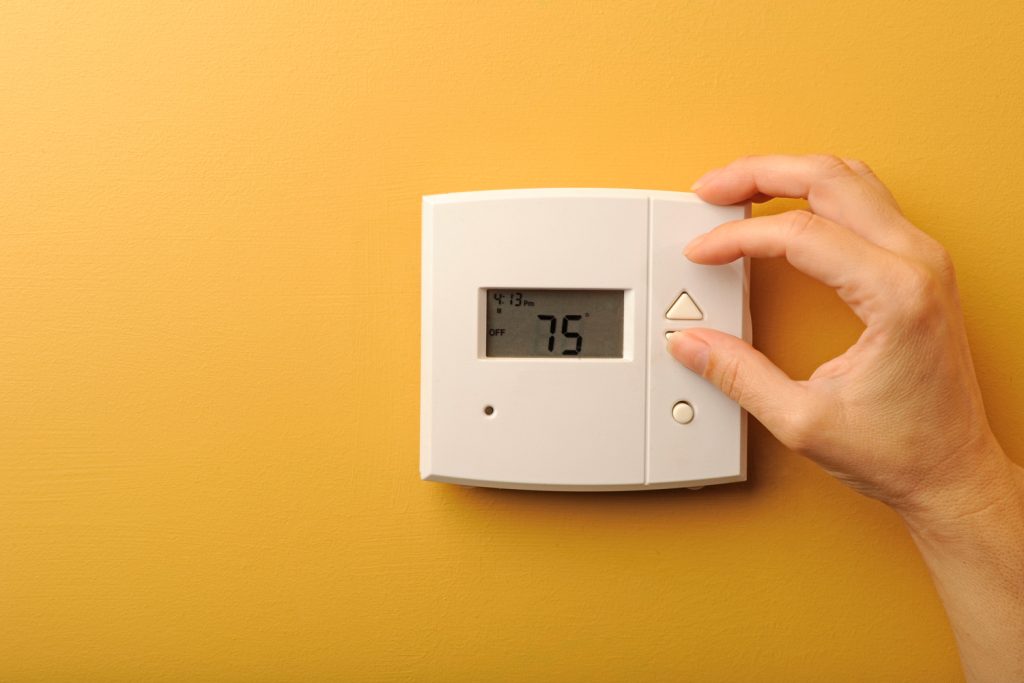
While direct sunlight is a major cause of concern why the thermostat in your home is not working properly, there are also many factors to consider. It all comes down to where your thermostat is located, how well it was installed, and if there are other sources of heat and cold around it to cause a misreading. Make sure to surround your thermostat with household items that do not cause a temperature misreading.
If you found this article helpful in any way, consider checking the links below. They would provide you with additional information and also answer questions that aren't in this article.


